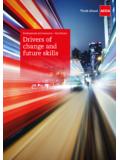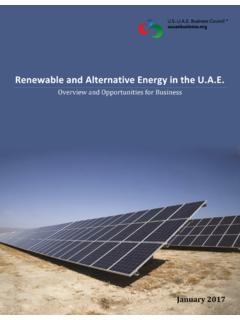Transcription of RRIF” - HowToBeSetForLife.com
1 Tax Effective Withdrawal Strategies For Your RRSP or rrif . Mark Huber CFP, Author, Speaker, Coach, Attraction Marketer Copyright Mark Huber - 1- Hello and Welcome! For most Canadians, about the only legitimate tax shelter left of any significance is the registered retirement savings plan (RRSP), which allows you to deduct plan contributions. Also, earnings accumulate on a tax-deferred basis. But for some investors, success in building healthy RRSPs is giving them headaches and tax headaches. You get a tax break on contributions and earnings, but when money comes out of a tax-deferred plan it is fully taxable as regular income at your marginal rate. Even though you may have earned capital gains or dividends inside your plan, these do not attract the favorable tax treatment afforded them outside.
2 Having more money inside your RRSP than you require to live comfortably doesn't make sense because every dollar coming out of your RRSP is fully taxable! Once an RRSP becomes a Registered Retirement Income Fund (RIFF). at age 71, the government mandates larger minimum withdrawals every year -- whether you need the money or not. Beyond a certain point, rrif withdrawals will be taxed at the top marginal rates of 45 to 48%, depending on the province [but just 39%. in flat-tax Alberta.] (at time of writing). Why has there been so little written about melting down RRSPs? One big change that makes the strategy more attractive is the new 50% inclusion rate for capital gains, down from 67% and 75%. That means capital gains in investments held in non-registered portfolios will draw tax at about 23% in most provinces, and then only if you decide to crystallize a profit in a given year.
3 If you don't need the money you can defer the capital gains tax liability of a non- registered investment until you really need the cash, or at your death if you don't. By contrast, the part of a rrif subject to the minimum withdrawal is taxed fully as income, with the minimum withdrawal amount rising higher with age. Copyright Mark Huber - 2- Apart from straight income taxes -- often at or near the top marginal rate -- there are clawbacks of Old Age Security and other government benefits to consider. Once an RRSP reaches $700,000 and beyond it begins to be subject to claw backs of OAS benefits. Result: Potentially hefty taxes for you when you withdraw money, or for your estate. What's left in your RRSP or registered retirement income fund ( rrif ).
4 When you pass on will eventually become taxable, the bills having to be paid by your estate or your heirs. It's legitimized extortion, is one lament I have heard. (And frankly, I. agree!). To sidestep this getting into this problem in the first place more and more Canadians have turned to a strategy called an RRSP meltdown, . which has been around since the mid-1990s. Its main purpose is to get money out of an RRSP without being drowned in tax. It can also be an estate planning tool, among other things. The strategy in detail In general, meltdown works like this: You borrow money to invest in capital-gains-earning securities. To pay the interest, you withdraw cash from a tax-deferred account. That withdrawal becomes, in effect, tax-deductible, because in this example the rules allow you to deduct interest on loans used to make income-producing investments.
5 Your investment earnings are now in the form of capital gains, and will be taxed at a more favorable rate when you dispose of them. And by slimming your RRSP, you may also lower the odds that your heirs will face a punishing tax bill. Copyright Mark Huber - 3- Speaking against the merits of RRSP's is taboo for many advisors. So most people don't discuss it. For wealthy seniors, however, RRSP's can be a tax trap. Most people buy RRSP's because of the lure of the tax deduction. But is this a real tax deduction? Consider the following real life examples. A young man age 25 contributes $1000 to his RRSP and receives a $420 tax credit because he is at the 42% tax bracket. He invests at 12% and forgets about it until age 65, 40 years later. At retirement he withdraws all the money, which has now grown to over $93,000.
6 And is taxed at 42% again. Revenue Canada gets $39,000 back on their $420 investment in the man's RRSP. Revenue Canada also made 12% on their $420 investment , compounded over 40 years! A 70-year old retired teacher (now widowed) collects her pension of $36,000 plus the reduced pension of her late husband's pension of $25,000. She also collects CPP and OAS totalling $18,000. Her RRSP. is worth $300,000 (a combination of her RRSP and her late husbands RRSP). Next year, at age 71, she will have to begin withdrawals of about $22,000 that will be added to her income. Her total taxable income next year will be over $100,000 and she will pay about $40,000 in taxes. This would certainly push her to the highest tax bracket and many, if not all, government entitlements would be clawed back.
7 A husband and wife have combined RRSP/ rrif assets of $400,000. ($200,000) each. They both collect company pensions, CPP and OAS. They are killed in a car accident. Upon settling the estates, the executor must take into income all the existing income for the year plus the entire $200,000 in the RRSP or rrif . Each spouse's final tax return shows income totaling $250,000. Each estate is facing a tax bill of $120,000 for each spouse and without a large insurance policy payoff; this will reduce the size of the inheritance to the children by $240,000! (Ask us about an estate protection strategy that would eliminate this type of situation from happening to you!). Copyright Mark Huber - 4- The total tax liability that Canadians face on RRSP/ rrif withdrawals could easily wipe out the entire federal deficit!
8 Put another way, the government now owns about 40% of your RRSP or rrif and it seems that from the rumbling coming from Ottawa, they may want their portion sooner, rather than later! The Problem with RRSPs for Wealthy Canadians 1. The plan is registered with Revenue Canada so they can find you. All RRSP plan trustees are collection agents for the government. 2. Contributions are capped so many people cannot contribute what they need to live the retirement lifestyle they desire. The RRSP/ rrif Meltdown Stragety Here is how the strategy could work: This idea is for those individuals with a large RRSP or rrif and who are concerned about taxes now and in the future and want to look at alternatives to their wealth creation process We'll assume an RRSP of $300,000 that is earning in Canada annually.
9 (This is a historical average and not a guarantee of future return.) and a 12 -year time horizon. We'll also assume that we arrange an investment loan of $750,000. costing 6% interest annually and investing the loan proceeds to earn annually. (This is a historical average and not a guarantee of future return.) with a 12 -year time horizon. Loan payments can be structured as interest only (or as amortized). but for simplicity, we have shown the interest only loan. The following steps are recommended: 1. Borrow $750,000 and invest it. As the purpose of the loan was Copyright Mark Huber - 5- investment, the interest on the loan is tax deductible. 2. Withdraw $45,000 from the RRSP each year. (Some tax will be withheld on the withdrawal. This will be refunded when your return is filed.)
10 3. Use the $45,000 from the RRSP withdrawal to pay the interest cost on the loan. The result: Essentially, investors are changing the location of their invested capital. It's gone from a place where it's fully taxed to a place where it's half-taxed! Essentially, taking advantage of capital gains being taxed on only 50%. of the gain and as well, when applicable, the dividend tax credit. The yearly RRSP withdrawals are tax free as they are offset by the interest expense deduction. Investing outside an RRSP removes the constraints of investing inside your RRSP. In the end of 12 years, you have a $750,000 loan outstanding that can be paid off by liquidating a portion of the portfolio built up on the borrowed funds. What you have left is the after-tax growth of the portfolio from the original $750,000 invested.


